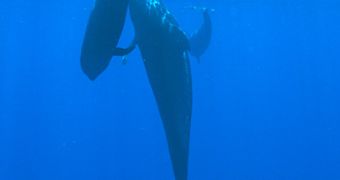After their gruesome challenge, the 11 whales that were saved Sunday from certain death have now joined a larger pod and are heading for their traditional migration routes, an Australian official said yesterday. These whales are all that remained of a 64-whale maternal pod that crash-landed on Tasmanian coasts Saturday night. GPS collars attached to 5 specimens allowed for satellite tracking of the animals, which have now joined others and seem to be doing fine.
"Not only have they survived being put back in the water after their traumatic ordeal but they've also found each other and are traveling with each other," said Tasmanian Department of Primary Industries and Water representative, David Pemberton. "Previously, rescue attempts have been something of a hope and a prayer. Now we know that the rescue efforts are well worth it, we have the evidence that tells us so."
Saving stranded whales is not as easy as it may seem, regardless of the existing technology. There's only so much anyone can do to lift and carry these large animals across roads and bridges, to the safety of deep waters. Throughout Sunday, volunteers and wildlife servicemen kept the pilot whales cool, by pouring water on them, to prevent overheating, a common occurrence in stranded whales.
The shallow waters can be very treacherous to the animals, and they can easily reach the shore line, unable to return to their habitats. Even after they are saved, they sometimes return to the place where they were saved, swimming in dangerously shallow waters. There is no current scientific explanation as to why this happens, but marine experts hypothesize that their "sonars" may be affected by noise pollution.
Fortunately, this case ended happily, as the larger pod is now swimming east, towards migration routes usually used by humpback whales. Although the small pod was released at 30-minute intervals, they managed to reunite and join another group, thanks to their very sociable nature. All these signs seem to point at the fact that they have recovered nicely and that their chances of survival are very high.

 14 DAY TRIAL //
14 DAY TRIAL //